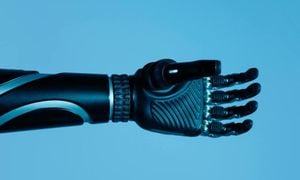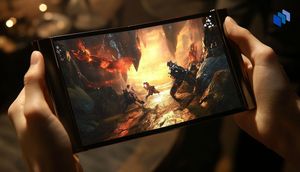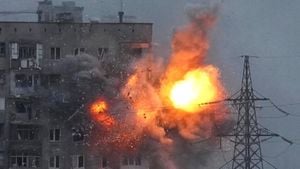Boeing's Starliner spacecraft has landed back on Earth, but it missed one key thing—aboard its capsule were no astronauts. After months of delays and technical troubles, the capsule, affectionately dubbed "Calypso," descended from space and parachuted gently down to White Sands, New Mexico. What should have been a routine eight-day return mission has turned out to be an unexpected odyssey, leaving NASA astronauts Butch Wilmore and Suni Williams stranded aboard the International Space Station (ISS) for the foreseeable future.
The Starliner took flight earlier this year, carrying Wilmore and Williams to the ISS on June 5 for what was initially planned as an eight-day mission. Unfortunately, complications arose almost immediately after launch, including helium leaks and malfunctions with its thrusters. These concerns turned what was meant to be a short visit to the space station, initially scheduled to conclude by June 13, 2024, to what now looks to be nearly eight months of waiting.
NASA and Boeing faced difficulties concerning the spacecraft's safety, and by August, the space agency decided it would be too risky to bring the astronauts back aboard Starliner. Instead, NASA announced plans for the astronauts to return on SpaceX's Dragon spacecraft, which is slated for launch late this month. Until then, both astronauts are required to remain onboard the ISS, where they will continue performing experiments and engaging with their families via video calls. Williams maintains positive spirits about their prolonged stay, sharing with NASA mission control before the Starliner's launch, “Bring her back to Earth. Good luck!”
Starliner's return to Earth took place at midnight Eastern Time on September 7, following a six-hour autonomous flight from the ISS. NASA officials, including Ken Bowersox, the Associate Administrator for Space Operations at NASA Headquarters, acknowledged the educational value of the flight, stating, "Even though it was necessary to return the spacecraft uncrewed, NASA and Boeing learned an incredible amount about Starliner in the most extreme environment possible." This statement highlighted Boeing's goal of moving forward with certification for crewed missions.
The capsule's arrival was celebrated by Boeing's Mission Control, following the successful touchdown—a feat achieved with observably fewer issues than anticipated during its searing reentry. Despite some residual thruster problems affecting its descent, the Starliner managed to land successfully, though still leaving two astronauts behind. The two astronauts now face the prospect of enduring multiple months before they can return to their homes on Earth.
There is no denying this is troubling for Boeing. The Starliner project has encountered numerous setbacks; the initial test flight back in 2019 went awry, leading to extensive repairs exceeding $1 billion. NASA's contract with Boeing, valued at over $4 billion, aimed to develop commercial space crew capabilities. But the frequent failures inthe Starliner's development process threaten to jeopardize Boeing's involvement going forward. Meanwhile, SpaceX, which has already completed nine successful missions transporting astronauts since 2020, prepares for another flight without the same level of systemic issues frustrating Boeing.
The stakes are particularly high, as NASA plans to continue relying on both Boeing and SpaceX to alternate missions through its Commercial Crew Program until the ISS is decommissioned. This demonstrates a commitment to maintaining diverse options for transporting astronauts to and from the space station.
With no immediate remedy for the embarrassment of returning the Starliner to Earth unmanned, the astronauts remaining on the ISS will have to adapt to their longer-than-expected stay, potentially undergoing psychological and physical strains associated with prolonged weightlessness. Fortunately, it appears they are well-prepared for the situation, with sufficient supplies and ample support from NASA.
The incident does raise some questions about what happens next for Boeing and its astronaut program. With the comprehensive exploration of Starliner's failures still underway, substantial assessment efforts will take center stage as the teams at NASA and Boeing work diligently to understand the root causes of the capsule's issues. The launch of SpaceX's Dragon capsule is set to replace the current situation, providing hope for Wilmore and Williams's safe return.
Starliner’s uncrewed return marks both the culmination of years of development and the beginning of new questions about Boeing's future role within NASA's commercial spaceflight capabilities and, more critically, what will come next for the stranded astronauts. For now, their focus remains on conducting research and maintaining communication with mission control until they can finally come home.



